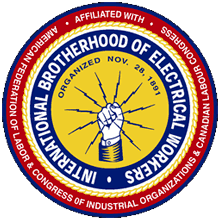June 19, 2013
By Oren M. Levin-Waldman
For a long time now, we have heard talk about creating “good” jobs, with manufacturing being at the top of the good jobs list. It almost implies that service sector jobs — the primary replacement for disappearing manufacturing jobs in a post-industrial economy — are really bad jobs. Well, if the definition of a good job is one that pays a solid middle class wage that allows one to live in dignity, this is probably true.
We have become obsessed with the idea that manufacturing jobs are good jobs, and therefore we need to attract manufacturing back to the U.S. To build things is a reason unto itself because it might provide an avenue towards economic independence. If we cannot attract manufacturing because the law of comparative advantage holds that those who can manufacture should do so, we need to find a way to redefine good jobs to include service job in an ever growing dual economy.
In our dual economy, we have high paying and high skilled jobs at the top and low paying and low skilled jobs at the bottom. For some reason, manufacturing has been perceived to be high skilled because it has been high paying. Relative to low paying service jobs this may be true, but it misses historical reality. What made manufacturing high paying was the presence of unions, who were able to organize workers for the purpose of affording them dignity in their work. In the early days of the American labor movement, wage labor was looked down upon, and it did not take much by way of skills to work in a factory on an assembly line. The idea of unions was to give workers who were forced to work for wages dignity in their work. One way to achieve this dignity would be to be paid liveable wages through collective bargaining. Manufacturing, in other words, was the low-wage work of the late Nineteenth and early Twentieth centuries. Over time, and through collective bargaining, unions were able to afford factory workers dignity in their work and effectively create a viable middle class.
When employers decide to close plants in the U.S. and reopen them where they can pay their workers a fraction of what they were paying their American unionized workers, they are acknowledging that there was nothing in manufacturing per se that created a skilled workforce. On the contrary, it was institutions, most notably unions. Therefore, the answer for reinvigorating the middle class would appear to lie in organizing low-wage service workers; not in bringing back manufacturing. This isn’t to say that we should not bring back manufacturing, rather it is by no means magic bullet needed for solving our economic problems. If low-wage service workers could achieve liveable wages through collective bargaining, they too would have dignity in their work, and for no other reason than they would feel better about the work they are doing. Their jobs, then, would also be perceived as “good” jobs.
Let’s not make any mistake about it: when states pass right-to-work laws, they are not only assaulting unions, but the entire middle class that simply yearns to earn liveable wages and have dignity in their work. Right-to-work laws are not about giving workers free choice, anymore than late Nineteenth Century “liberty of contract” doctrine was about empowering workers to negotiate their best employment arrangements. These laws are nothing less than an attempt to strip workers of the dignity in their work by forcing wage workers into a new type of servitude where they are forced to accept whatever low wages employers are willing to pay. Once this happens, attracting manufacturing jobs because they are “good” jobs might well prove to be an exercise in futility because there will no longer be institutions to ensure that they remain “good” jobs. But organizing workers is essential for another reason. By giving workers dignity in their work and paying them a wage they can feel good about, they may well become more productive as Sidney Webb suggested years ago in what has come to be known as the “Webb’ effect. In other words, if organizing and collective bargaining results in higher wages, not only will the economy be more efficient because of greater productivity, but there will be greater prosperity because workers will have the wherewithal to demand more goods and services in the aggregate. This is ultimately what leads to job creation, ane even the creation of “good” jobs.



